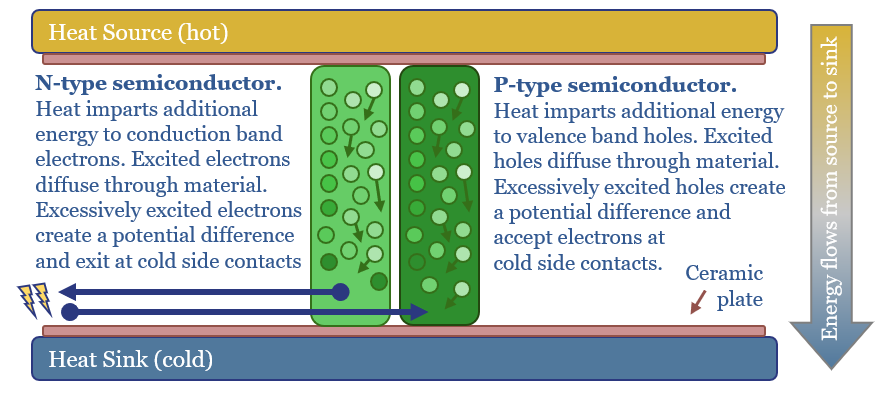
…13. What conclusions for decision-makers in the energy transition? For example, what would happen to fuel cells in a world that unlocked 40-50% efficient thermoelectric generators, with no moving parts…
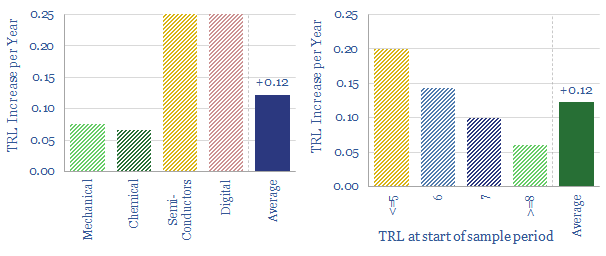
…post-combustion CCS, battery recycling, supercapacitors, aerial vehicles, Allam Cycle Oxy-Combustion, BECCS, direct air capture, airborne wind, metal organic frameworks, drones, molten carbonate fuel cells, deep geothermal, autonomous vehicles, chemical looping…
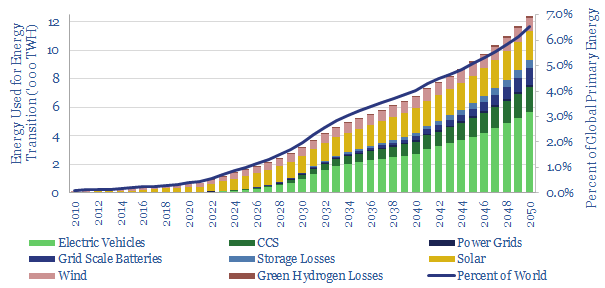
…at the anode, storage, transport, fuel cells, etc. Our chart above has <0.1% of the world’s useful energy in 2050 coming from green hydrogen. But if the number were 10%,…
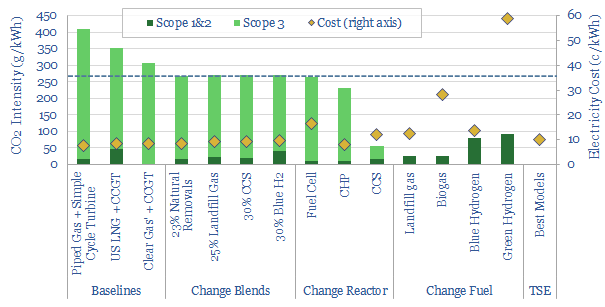
…green taxonomy is the use of CHPs, and possibly also some fuel cells, which can achieve higher efficiencies and thus attain 200-270g/kWh CO2 intensities. Also potentially helped are blends of…
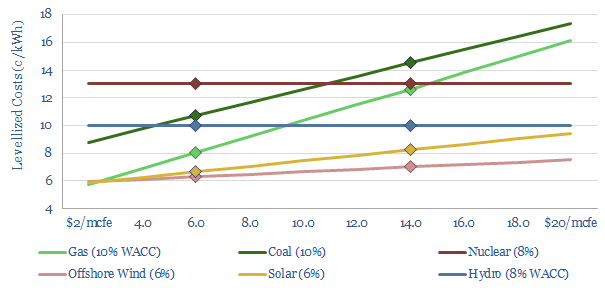
…cells. The lowest-cost ‘net zero power grids‘, we argue, most likely comprise a mixture of 25-50% renewables, backstopped with the most efficient and low-carbon natural gas power. There will inevitably…
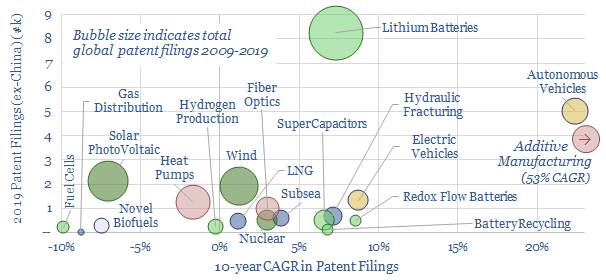
…interest has been in fuel cells and biofuels, declining at -10% pa and -7% since 2009. It remains interesting to compare the pace of progress within sub-industries; for example, more…

…technologies are accelerating fastest. Wind and solar remain heavily researched, but the technologies are maturing. The steepest deceleration of interest has been in fuel cells and biofuels. It remains interesting…

…new CO2 technologies such as CO2-EOR, oxy-combustion, carbonate fuel cells, metal organic frameworks and direct air capture. Measuring and monitoring CO2 is one of the largest challenges, hence our data-file…







